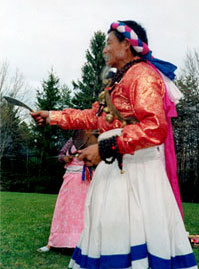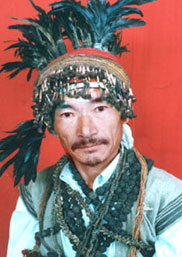Western Students Sought for Preservation of Ancient Healing Traditions

Ancient healing traditions of shamanism are still taught in the Himalayan mountains of Nepal, Bhutan, and Northern India where access to western medicine is difficult, Unfortunately, however, with each passing year, the outside world penetrates more and more into the remote mountain villages along with tourism an electrification and the young are turning away from their own traditions. The ancient knowledge of shamanism, believed to date back more than 70,000 years, is today being practiced primarily only by elders and already in the process of dying out.
Therefore people like Mohan Rai felt that it is time now to act and in result of this effort Shamanistic Studies & Research Centre was formed to preserve this endangered shamanic wisdom by teaching the techniques and traditions to interested Western students. Introduction to Himalayan Shamanism is a three-week orientation program to familiarize students with the practical uses, techniques and world view of traditional Himalayan shamanism, Classroom-type sessions alternate with experiential demonstrations and practice of elementary techniques. The program is designed both for scholars and practitioners of shamanism.
- Cosmology of the Himalayan Shamans.
The shamanic world has three main levels; The Upper World where the sun, Moon, stars, Planets, Deities and Sprits important to the shaman’s healing work hold away, the Middle world of normal human life where also dwell many types of spirits, both harmful and useful; and the Lower world, with its powerful Deities and Spirits. The Shaman must know the names and powers of all these being for use in healing work. The myths and tales surrounding the shaman’s work provide important clues to western students for accessing the shaman’s power.

-
- Divination. The shaman uses trances and non-trance divination techniques to learn the nature of a patient’s illness and its cause, the whereabouts of lost objects, the identity of their source of jealous thoughts.
- Healing Techniques. The shaman uses a combination of offerings, ritual (chinta) objects, mantras and gestures. In a chinta, the costumed shaman enters trance-state with the aid of drums and dance, to deal directly with the deities and spirits.
- Cutting the Line of Fate. Sometimes a man or woman suffers a period of extremely bad luck, inability to find work, loss of property and loved ones, depression and illness. The shamanic term “khadco Kattne” ceremony deals with the forces responsible for this ill fate to change the patient’s life.
- Mantras for Healing and Protection. Much of shaman’s work is done through mantras handed down through the centuries as closely guarded secrets. No shaman will disclose his mantras to anyone other than his or her own students; however, sincere beginning students in this program have often been taught simple mantras traditionally given to shaman’s apprentices.
